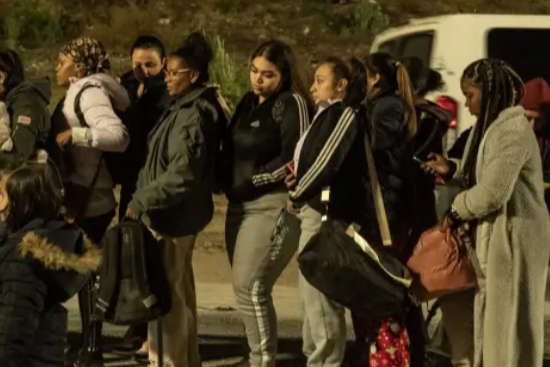
US Customs and Border Protection logged a record 269,735 migrants encountered in September.
That figure came on the heels of a record-breaking fiscal year, in which CBP reported nearly 2.5 million migrant encounters.
The numbers could have been much higher if not for the introduction of an app, CBP One, allowing unauthorized migrants to schedule their arrivals before claiming asylum, and new parole programs.
(Parole, in the immigration context, refers to an exception in the law that lets some noncitizens who would otherwise be ineligible for such protections work and live in the United States without fear of deportation.)
Today, thanks to Freedom of Information Act requests filed by the Center for Immigration Studies (CIS) and inquiries initiated by the House’s Homeland Security Committee, we know that these programs started earlier than the Biden administration admitted and that they involve many more migrants and countries, including terrorism hotbeds, than it has revealed.
Existed pre-rollout
On Jan. 5, the administration released a fact sheet detailing its efforts to manage the historic flow of asylum seekers with a new parole program. It advertised the program as being for citizens of four countries — Venezuela, Nicaragua, Cuba and Haiti.
{snip}
Here’s what we now know. The program wasn’t new when it was announced — the documents CIS obtained show that it existed 19 months before January’s public rollout.
The administration paroled more than 10,000 migrants from 29 countries in 2021, most from Mexico, Honduras and Guatemala.
It paroled over 13,011 migrants from 35 countries in 2022, including, curiously, more than 5,000 Russians.
Then, in the first eight months of this year, the number of parolees skyrocketed to nearly 250,000, only 136,000 of whom came from the four countries advertised as the program’s beneficiaries.
The rest came from 93 other countries, including more than 7,300 from “countries of national security concern,” including Afghanistan, Iran, Yemen, Lebanon, Jordan, Egypt, Mauritania, Uzbekistan, Turkmenistan, China and elsewhere.
Were these migrants subjected to additional screening? We have no idea.
Humanitarian cover
According to the House Homeland Security Committee, CBP approved 93% of Mexican parole applicants, even though, according to the Department of Justice, it approved only 4% of Mexican asylum applicants in the first half of FY 2023.
The fact sheet describing the program made it sound like its purpose was to allow migrants to enter and make “protection claims” — i.e., an asylum application.
{snip}
The CIS FOIA dump also revealed that aside from the quarter-million migrants paroled this year at the US southern border, CBP has paroled another 221,456 citizens of Venezuela, Haiti, Cuba and Nicaragua, who were allowed to fly directly into their preferred port of entry.
Before the Biden era, humanitarian parole was granted to migrants only on a case-by-case basis and typically only for special cases, often for people who needed lifesaving medical treatment.
Now, Texas is spearheading a 21-state lawsuit to stop the program.
The courts will decide the program’s legality, but if Democrats want to expand immigration, they should introduce legislation to do so, rather than cooking up dubious schemes like mass parole.
Adapted with permission from City Journal.
* Original Article:
https://nypost.com/2023/11/08/opinion/the-biden-administration-is-hiding-the-real-scale-of-the-migrant-crisis/amp/


